Precise testing of pesticides in food using the SCIEX Triple Quad™ 7500 LC-MS/MS System – QTRAP® Ready
Highly sensitive analysis of multi-compound panels in various matrices for food regulations
Jianru Stahl-Zeng1, Ian Moore2, Thomas Biesenthal2, Jack Steed3, Wim Broer4
1SCIEX, Germany; 2SCIEX, Canada; 3 SCIEX, UK, 4Nofagroup, The Netherlands
Abstract
The SCIEX Triple Quad 7500 LC-MS/MS System - QTRAP Ready provides impressive levels of sensitivity, robustness and accuracy for trace level analysis of pesticide residues in food matrices. Here, over 1400 MRM transitions for 700 compounds were analyzed in a single analysis achieving quantification limits of 0.2 ng/mL for the majority of the pesticides tested.
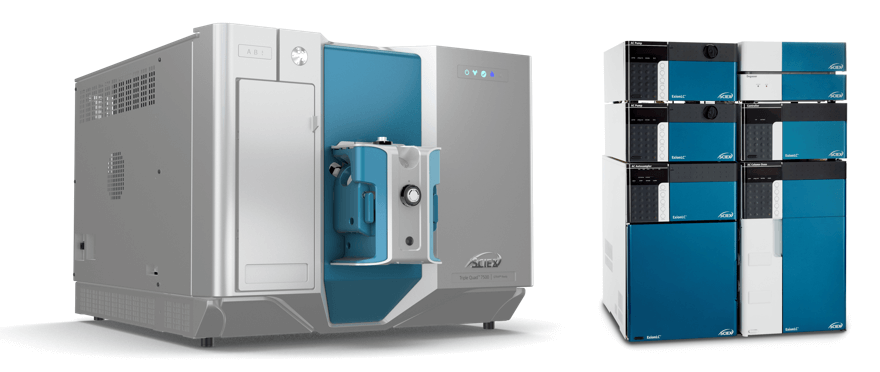
Introduction
The intensive use of pesticides in agriculture has led to the need for rigorous and extensive use of analytical technologies to ensure that there is no impact on human populations. Depending on the class of compounds, this has been primarily achieved through LC-MS/MS. Maximum residue limits (MRL) are set for regulated residues that define the highest level of a pesticide residue that is legally tolerated in food such that it is safe for consumers. Often these MRLs are set very low for some pesticides, to ensure highest safety, requiring very sensitive instrumentation to accurately quantify these compounds down to their MRL. Therefore LC-MS/MS solutions must be robust and sensitive to meet the needs of food testing labs.
In this method, over 700 compounds have been analyzed, covering required testing for numerous regions including Europe, North America and various areas within Asia. This breadth of coverage of pesticides has been achieved in part due to the increased sensitivity observed when utilizing the SCIEX Triple Quad 7500 LC-MS/MS System – QTRAP Ready relative to previous generation instruments.1 Improvements in both the generation of ions and the sampling of ions has resulted in significant sensitivity gains.2 For residue testing in food testing, this means that more analytes can be combined into a single analysis, complex matrices can be further diluted to reduce matrix effects, while still being able to achieve or exceed the necessary levels of sensitivity.
Figure 1. Quantification of cyantraniliprole in select food matrices. Two MRM transitions for cyantraniliprole at an LLOQ of 5 µg/kg in fruit/veg, grain, oil seeds and vegetable oil matrices.
Key results for large panel pesticide testing
- Quantification of more than 700 pesticide compounds within 10 different food matrices
- Simple sample preparation was used, food matrices were diluted and analyzed without further SPE purification
- Improved sensitivity over previous assays with an LLOQ of 0.2 ng/mL in solvent and 5 µg/kg in matrices possible for the majority of compounds analyzed.
- Ion ratio values can confirm identity and improve the specificity of the analysis within all 10 food matrices at the LLOQ of 5 µg/kg.
- Positive and negative switching was performed to improve the throughput of the analysis without any compromise on data quality.
- The ability to analyze such a broad panel of residues in a single injection will save significant time and resources in testing labs over the lifetime of the instrument
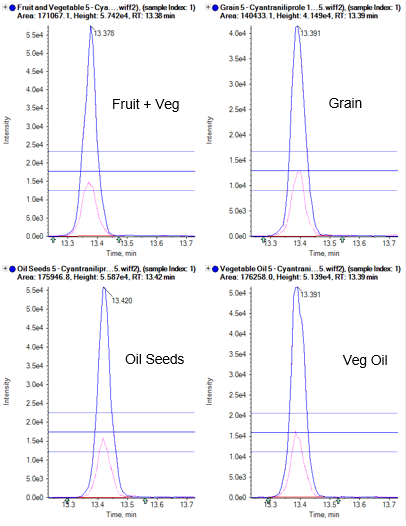 Click to enlarge
Click to enlarge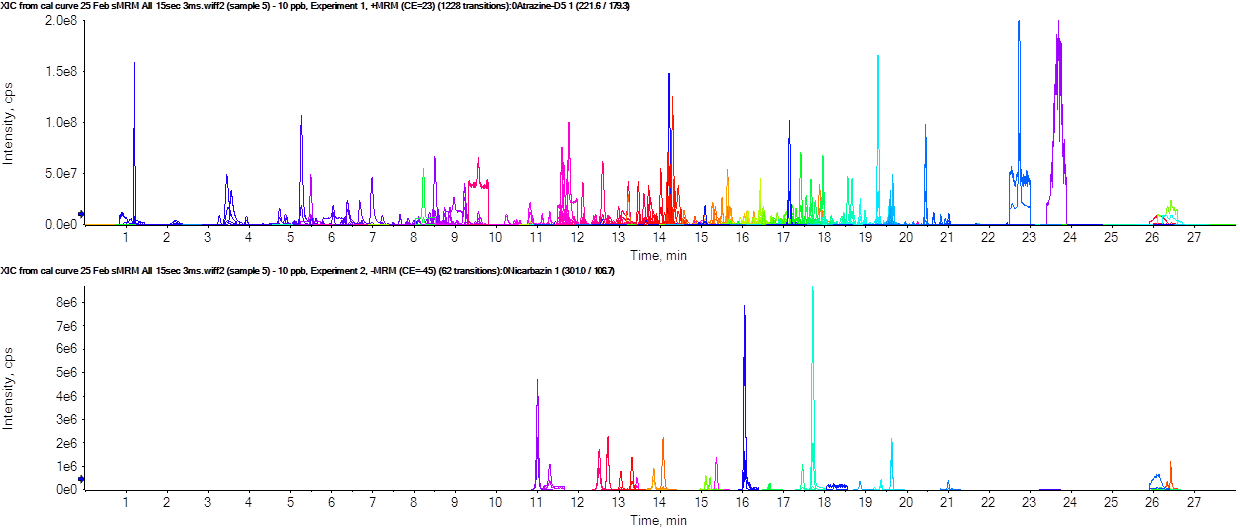 Click to enlarge
Click to enlarge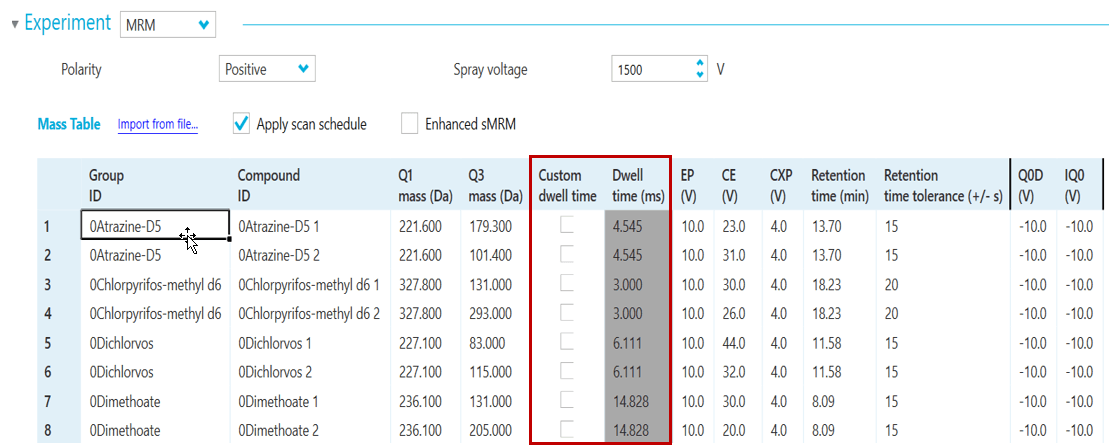 Click to enlarge
Click to enlarge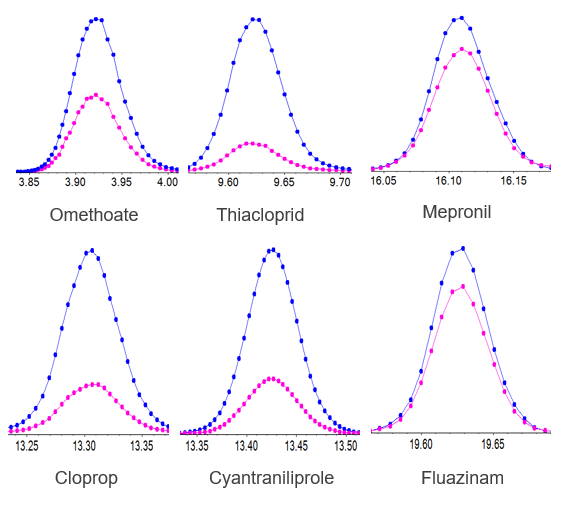 Click to enlarge
Click to enlarge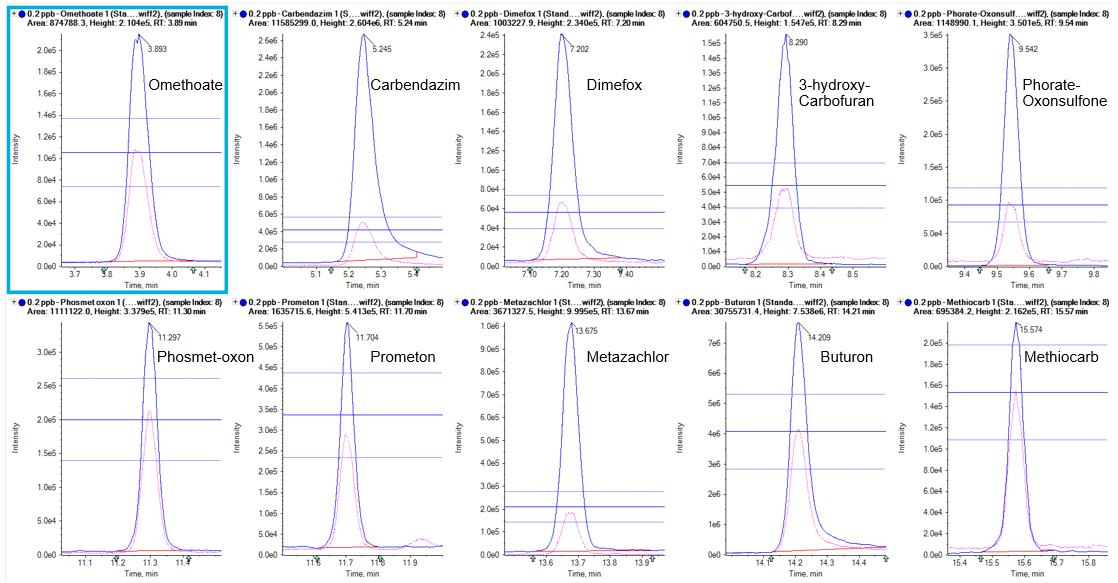 Click to enlarge
Click to enlarge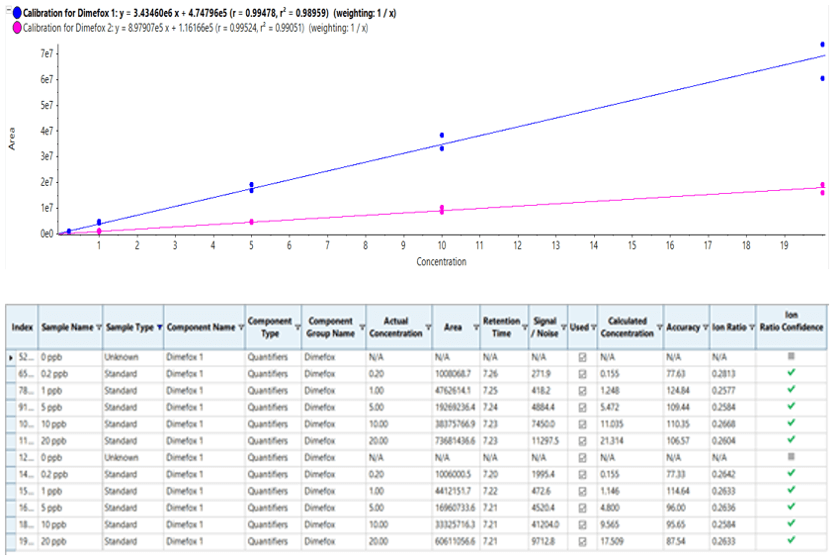 Click to enlarge
Click to enlarge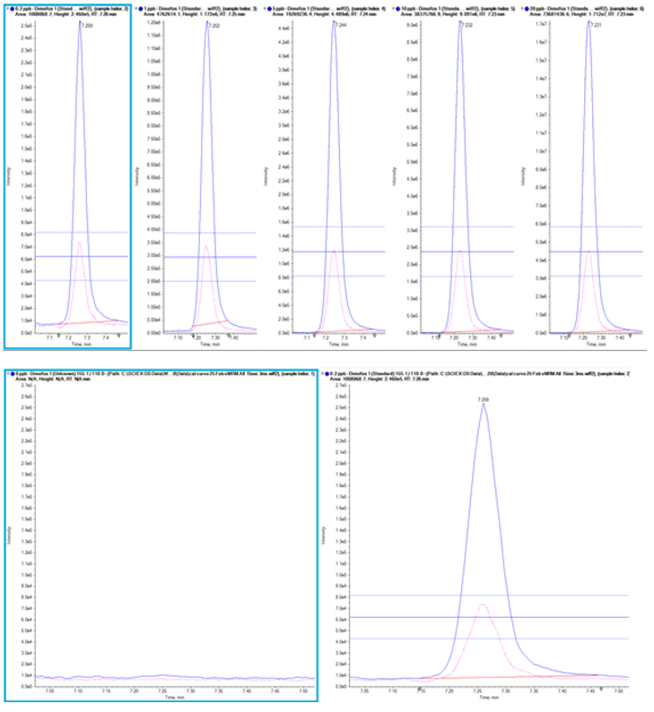 Click to enlarge
Click to enlarge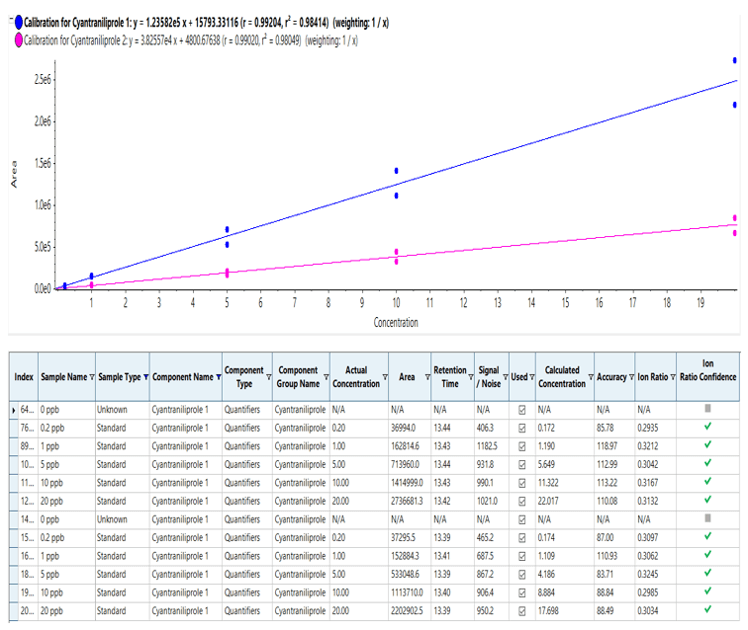 Click to enlarge
Click to enlarge Click to enlarge
Click to enlarge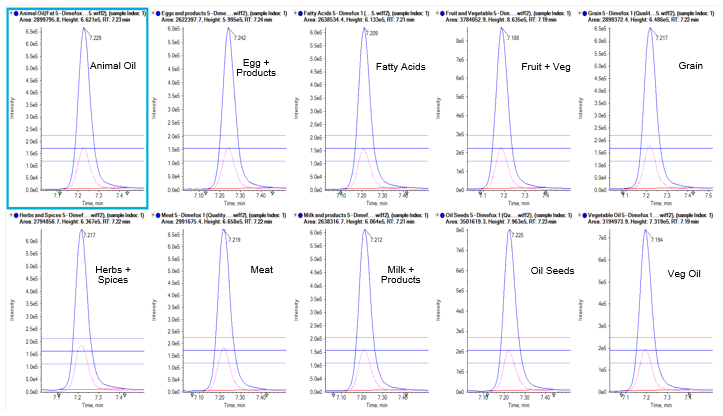 Click to enlarge
Click to enlarge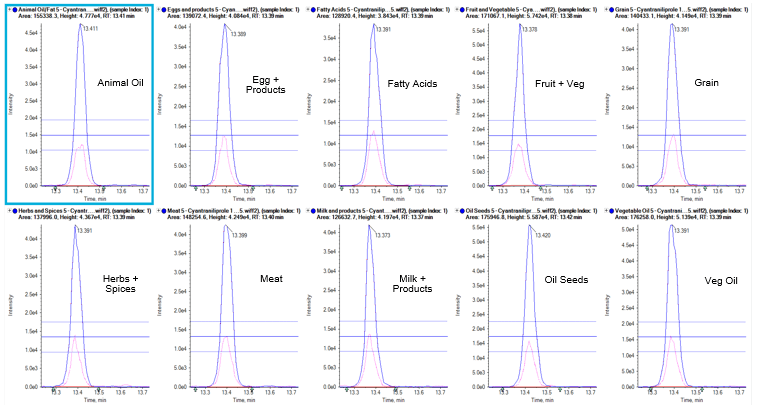 Click to enlarge
Click to enlarge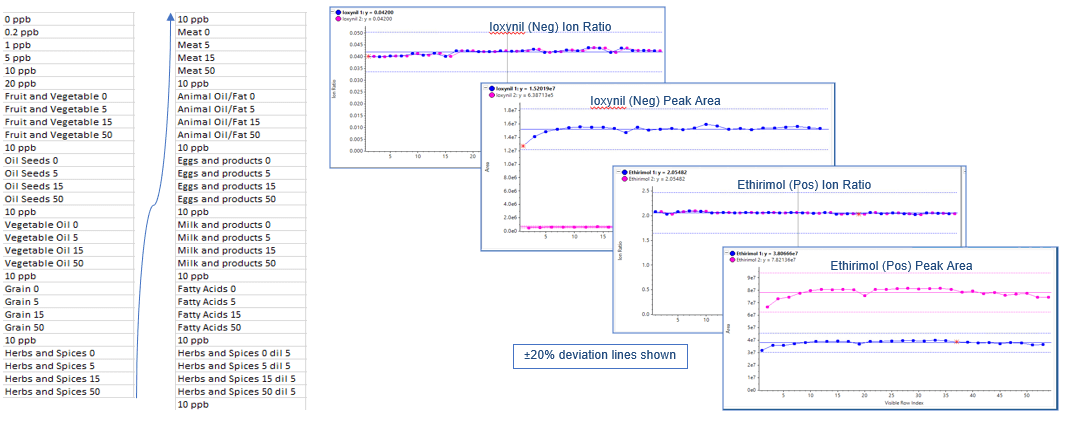 Click to enlarge
Click to enlarge